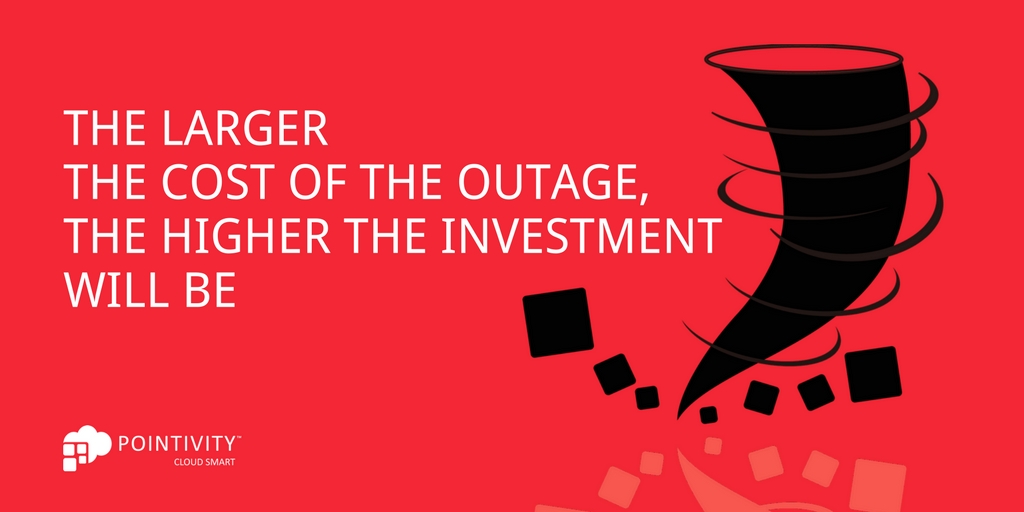Azure Site Recovery is a comprehensive protection solution for VMware, Hyper-V, and physical servers. It allows organizations to use Azure as their recovery site, eliminating the need to manage and maintain a secondary site for different types of workloads.
Azure Site Recovery also makes it easy to detect and stage multi-tier applications. You can restore them as a group, using specific startup ordering and run scripts to bypass the need for manual configurations.
In this article, we’ll look at how to use Azure Site Recovery to create an effective business continuity planning and disaster recovery plan for your IT team.
What is business continuity planning and disaster recovery?
A business continuity planning and disaster recovery plan defines the processes for dealing with disruptive events that result in temporary or permanent app outages.
Disruptive events can happen as a result of hardware or software failure, natural disasters, cyber attacks or regional disasters that cause wide-scale loss in a particular Azure region.
The ultimate goal of a continuity plan is to ensure these disruptive events don’t have a significant impact on a business’ ability to function.
Here are the steps we recommend you take when creating a business continuity plan with Azure Site Recovery:
Step 1: Identify the scope of your plan
Assess your business processes to determine which areas are vulnerable, and what losses you would experience if these processes went down for a day, a few days, or longer.
The most vulnerable business processes in any organization include:
- Payroll
- Financial analysis
- Management operations
- Product development
- Accounting (e.g. accounts receivable and accounts payable)
- Technology management
Step 2. Identify dependencies
Map out all the dependencies in your infrastructure to get a better picture of the complexity of your technology systems. Establish the hardware, software, data and connectivity components that must keep running during an IT failure.
For example, the most common dependencies in SaaS businesses are SQL databases such as SQL Server, Oracle, PostgreSQL, MySQL, Sqlite, and NoSQL databases like MongoDB, Cassandra. These databases are regularly accessed by several applications within a company’s infrastructure, and could negatively impact a business’ operation in the event of an outage.

Step 3. Set your downtime objectives
Setting a Recovery Point Objective (RPO) and Recovery Time Objective (RTO) on Azure is critical to any business continuity plan.
The recovery point objective (RPO) refers to the age of files that must be recovered from backup storage for normal operations to continue after a disaster. The goal of RPO is to help you figure out how long your business can function without its data before it begins to suffer.
For example, if your business had an RPO of 10 hours, and there was an outage five hours ago, you would still be within the limits of your RPO. However, if the outage happened 15 hours, you wouldn’t be within your limits and your business function could be affected.
Recovery Time Objective (RTO) refers to the amount of time required for the recovery of your data after a disaster. The goal of this objective is to determine how quickly you need to recover your infrastructure and how much money you should budget to maintain business continuity.
For example, an RTO of 10 hours means that your business can only survive with systems down for 10 hours. In that case, you would need to have a high level of preparation and a high budget to make sure your systems recover as quickly as possible after a disaster. If your RTO is longer, for example, 2-3 weeks, you would require a comparatively lower budget to recover.
Step 4. Create your plan
Create a plan that highlights how you will recover all your systems, applications and data in the event of a disaster. This includes networks, servers, desktops, laptops, wireless devices, data and connectivity.
You should also consider interviewing key IT leaders in organizations who have gone through a disaster successfully. Their insights will help you better understand the steps involved in developing a risk analysis, presenting the benefits of a recovery plan, and proposing solutions and costs to senior management.
How Pointivity can help
Pointivity offers business continuity services and puts together a business continuity planning and disaster recovery plan to keep your operations and employees going even when disaster strikes. We store backups of your data to secure your company’s future and develop a strategy to reduce the cost of downtime and data loss.
Pointivity also creates adaptable DR solutions for you without the overhead cost associated with traditional DR. We customize the configuration for your specific requirements to meet your needs.
Understanding your company’s business and IT environment
We take note of your business processes and the system requirements needed for these processes to function at optimal levels. This allows us to prepare the scope of the plan, including what vital IT operations you need that could be interrupted during and after a disaster.

Performing risk assessment
During the planning phase of DR, it is crucial to identify vulnerabilities in the event of a disaster, such as a lack of regular backup of the company’s data. Inadequate backup procedures can lead to the loss of critical information. Pointivity’s team of experts will evaluate your company’s disaster recovery plan (DRP), IT protocols, and outline ways to secure valuable equipment and other assets.
Evaluate IT resource requirements
One of the crucial components of a DRP is the IT resources needed to restore business operations so that your company can resume business quickly after a disaster. Some examples include hardware, software, user documentation and outsourced support that can restore system processes back to desired levels. Necessary onsite and offsite backups and disaster recovery procedures must be developed.
Testing and maintenance
To maintain a successful DRP, regular testing of the plan should take place. We work with your schedule, with testing goals and strategies tailored to your business environment. The DRP goals are integrated into general business planning and system development so that the plan remains viable over time.
Ready to see the many ways Azure Site Recovery can protect your business? contact us at 858-777-6900 or email info@pointivity.com.








